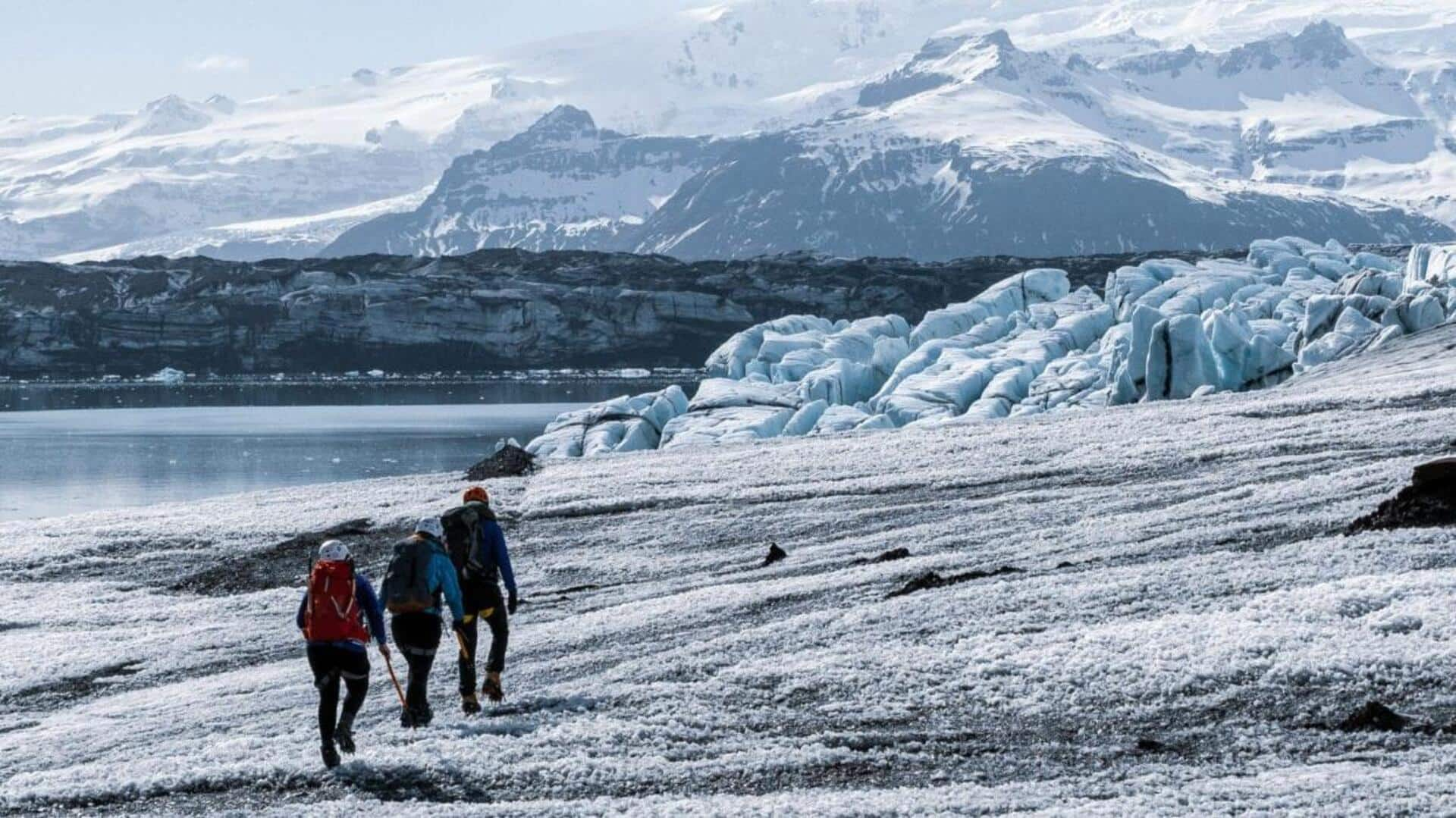
Journey into Vatnajokull's frozen heart, Iceland
What's the story
Vatnajokull, Europe's largest glacier, offers a surreal landscape of ice caves in Iceland, accessible during the winter.
These natural wonders are stable and safe for exploration at this time.
Walking through these glittering ice formations provides an unparalleled experience.
It's a unique adventure for those eager to explore nature's icy artistry, showcasing the beauty hidden within Vatnajokull's frozen heart.
Preparation
Planning your ice cave adventure
Before embarking on an ice cave tour, it is crucial to dress warmly in waterproof clothing.
Tours usually provide essential safety equipment like helmets and crampons, but verifying with your tour operator beforehand is recommended.
Given the dynamic nature of glaciers, a knowledgeable guide is mandatory for safety.
They can safely navigate the caves and offer insights into their formation and history.
Selection
Choosing the right tour
Numerous companies offer guided tours to Vatnajokull's ice caves, with variations in duration and difficulty.
It's crucial to choose a tour that aligns with your fitness level and sense of adventure.
Some options include glacier hiking or super jeep rides to secluded cave entrances.
Early booking is advised, as spots quickly fill up during the peak season from November to March.
Photography
Capturing the moment
The ethereal beauty of Vatnajokull's ice caves presents a unique photography opportunity. Natural light filters through the ice, creating stunning shades of blue.
To capture this beauty, consider bringing a camera with manual settings adjustments for low light conditions.
Tripods can be useful, but check if your tour allows them due to space constraints inside the caves.
Conservation
Respecting nature's artwork
While exploring Vatnajokull's ice caves, adhering to Leave No Trace principles is crucial.
Do not touch the cave walls or ceilings, as heat from hands can harm them over time.
Always stay close to your guide and heed their advice to minimize your impact on this fragile environment.
Following these guidelines ensures the preservation of these magnificent formations for future generations to experience.